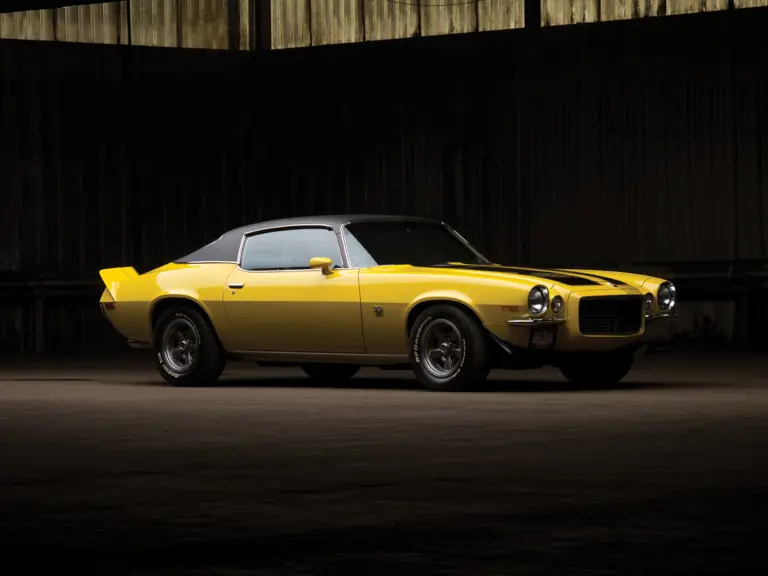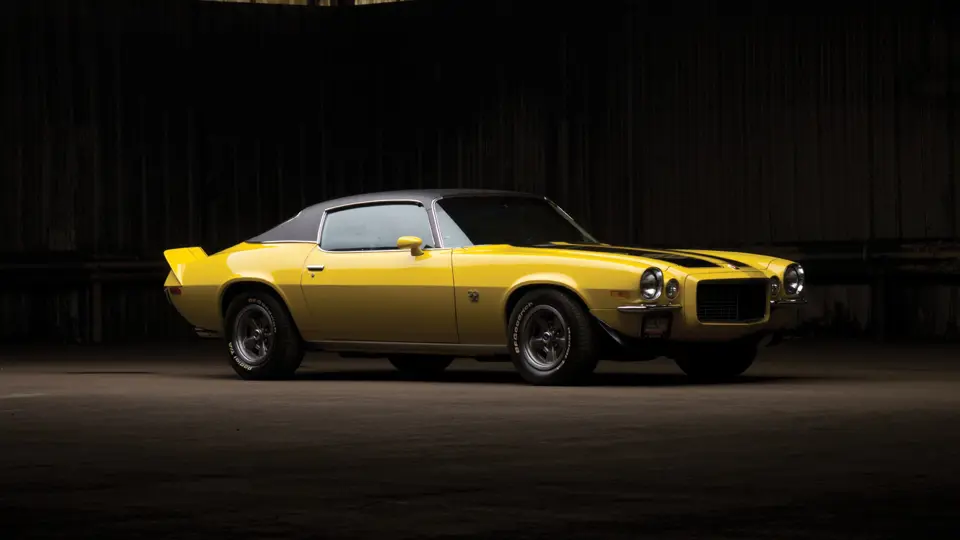 | Auburn, Indiana
| Auburn, Indiana
There had been a long period of time that sports cars and musclecars were mainly bought for their looks and performance. As the automotive world and consumers eased into the 1970s, it was becoming increasingly apparent that the car needed to be appealing inside, and have convenience luxuries available for those who desired them on a performance package. The Camaro was touted as being “as close as any car can come to the Corvette and still have a back seat.”
There were very few changes to the 1971 Chevy Camaro compared to its 1970 counterpart. There were mild updates to the grille insert and several new options were added, including optional vinyl top offerings. There were differences in the trim details contingent upon the options ordered. Power disc brakes were standard along with reflectors, side marker lights, windshield washer, dual-speed wipers, defroster, bucket seats, rear bucket-style seat cushions and inside day-and-night mirror.
Buyers who selected the Camaro SS, like the car being offered, received dual exhaust, power brakes, left-hand remote-control sport mirror, special ornamentation and hood insulation. The SS models rode on F70-14 white lettered tires and 14x7 inch wheels. In the front was a black-finished grille and there were Hide-Away wipers. This Sunflower Yellow example has black stripes and also a black interior that has the custom interior option. This is readily identified by the factory special instrumentation (including tachometer) and simulated wood-grain that is located on the instrument panel, center console and door panel trim.
This particular car is powered by the optional 396-cid, 300-hp Turbo-Jet engine that is matched to a desirable four-speed manual transmission. Further equipment that is to be found is air conditioning, front and rear spoilers, optional black vinyl roof, factory steel wheels, radio, SS badging; power steering and power brakes with front discs.





